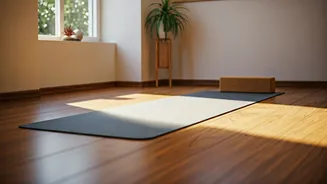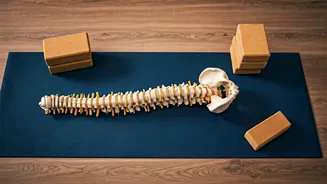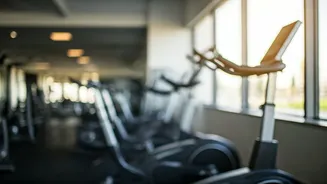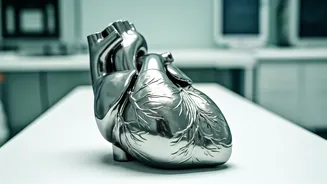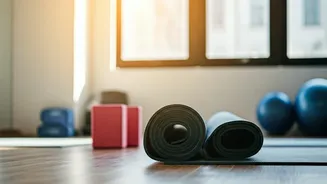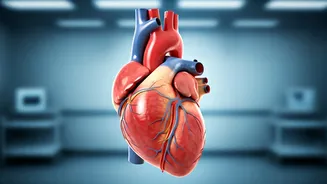Introduction to Yoga
Yoga, an ancient practice originating in India, combines physical postures (asanas), breathing techniques (pranayama), and meditation to promote overall
wellness. It's more than just a physical workout; it's a holistic approach to health. Regular yoga practice can provide various benefits, including stress reduction, improved flexibility, and enhanced cardiovascular health. For those looking to manage their blood pressure, yoga offers a gentle yet effective way to achieve this. Numerous studies have shown the positive impact of yoga on lowering blood pressure, making it a valuable tool in managing hypertension. Simple poses can be incorporated into daily routines, making this practice accessible to everyone.
Mountain Pose (Tadasana)
Tadasana, or the Mountain Pose, is a foundational pose that serves as the basis for many other yoga postures. It's a standing pose that helps improve posture, balance, and body awareness. To perform Tadasana, stand with your feet together, or slightly apart, and your arms relaxed at your sides. Focus on grounding through your feet, lengthening your spine, and relaxing your shoulders. This pose is more than just standing; it's about connecting with your body and becoming aware of your alignment. The Mountain Pose promotes mindfulness and prepares the body for deeper practices. By simply holding this pose, one can feel a sense of calm and centeredness, which can, in turn, contribute to lower stress levels, which has a positive effect on blood pressure.
Child's Pose (Balasana)
Balasana, or Child's Pose, is a gentle resting pose that helps calm the mind and body. It's often used to counter the effects of more active poses and to relieve stress. To do this, kneel on the floor with your knees together or slightly apart, and then bring your torso down between your thighs. Rest your forehead on the floor and extend your arms forward or alongside your body. This pose encourages deep breathing, which can lower blood pressure. The Child's Pose helps to release tension in the back, shoulders, and neck, all areas where stress often manifests. By focusing on your breath and allowing your body to relax completely in Balasana, you can experience a sense of peace and promote relaxation and reducing any further blood pressure issues.
Downward-Facing Dog (Adho Mukha Svanasana)
Adho Mukha Svanasana, often called Downward-Facing Dog, is an invigorating pose that stretches the entire body. It’s an inversion, meaning the head is below the heart, which can help improve circulation. To perform this pose, start on your hands and knees, then lift your hips up and back, forming an inverted V-shape. Keep your hands shoulder-width apart and your feet hip-width apart. Downward-Facing Dog is known for its ability to improve blood circulation and energize the body. This pose can also help reduce stress and anxiety, contributing to the natural lowering of blood pressure. Regular practice of Downward-Facing Dog can promote overall well-being and improved cardiovascular health, by reducing stress levels.
Bridge Pose (Setu Bandhasana)
Setu Bandhasana, or Bridge Pose, is a gentle backbend that helps strengthen the back muscles and open the chest. It can also help reduce stress and improve circulation. To perform Bridge Pose, lie on your back with your knees bent and feet flat on the floor, hip-width apart. Place your arms alongside your body and lift your hips off the floor, engaging your glutes and core. This pose is known for its ability to reduce anxiety and stress, factors that often contribute to high blood pressure. Additionally, it helps to improve circulation by promoting blood flow to the heart and the rest of the body, which reduces the possibility of any heart issues.
Corpse Pose (Savasana)
Savasana, also known as Corpse Pose, is the ultimate relaxation pose. It’s typically practiced at the end of a yoga session to allow the body and mind to completely relax. To perform this pose, lie flat on your back with your arms at your sides and palms facing up. Close your eyes and let your entire body relax, focusing on your breath. Savasana is a powerful tool for stress reduction, which directly impacts blood pressure. By allowing your body to completely let go of tension, Savasana facilitates a state of deep relaxation. This pose encourages mindfulness and a sense of calm, promoting overall well-being. It is a vital component of any yoga practice, enhancing the benefits of the other poses and contributing to the natural regulation of blood pressure. Focus on your breath and let go of all thoughts and tension to fully enjoy the benefits of this pose.
